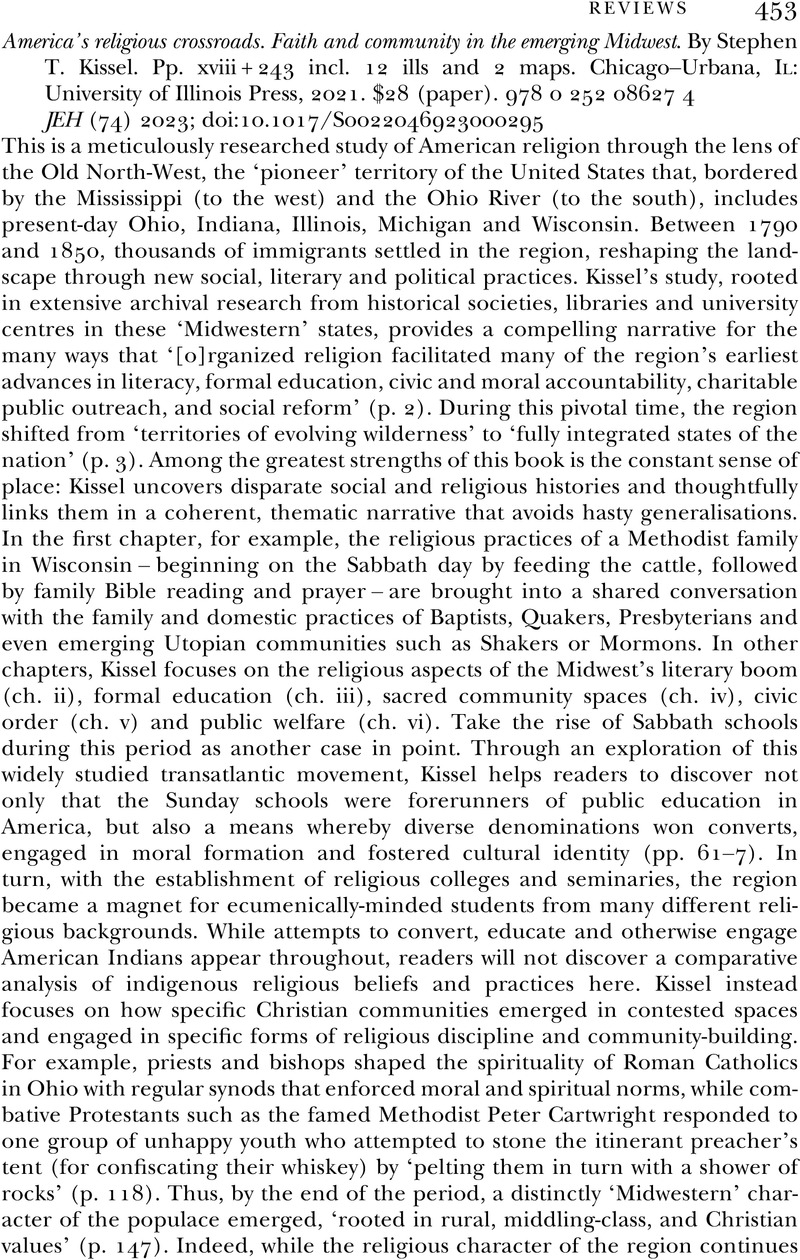No CrossRef data available.
Article contents
America's religious crossroads. Faith and community in the emerging Midwest. By Stephen T. Kissel. Pp. xviii + 243 incl. 12 ills and 2 maps. Chicago–Urbana, Il: University of Illinois Press, 2021. $28 (paper). 978 0 252 08627 4
Review products
America's religious crossroads. Faith and community in the emerging Midwest. By Stephen T. Kissel. Pp. xviii + 243 incl. 12 ills and 2 maps. Chicago–Urbana, Il: University of Illinois Press, 2021. $28 (paper). 978 0 252 08627 4
Published online by Cambridge University Press: 25 April 2023
Abstract
An abstract is not available for this content so a preview has been provided. Please use the Get access link above for information on how to access this content.

- Type
- Reviews
- Information
- Copyright
- Copyright © Cambridge University Press 2023



